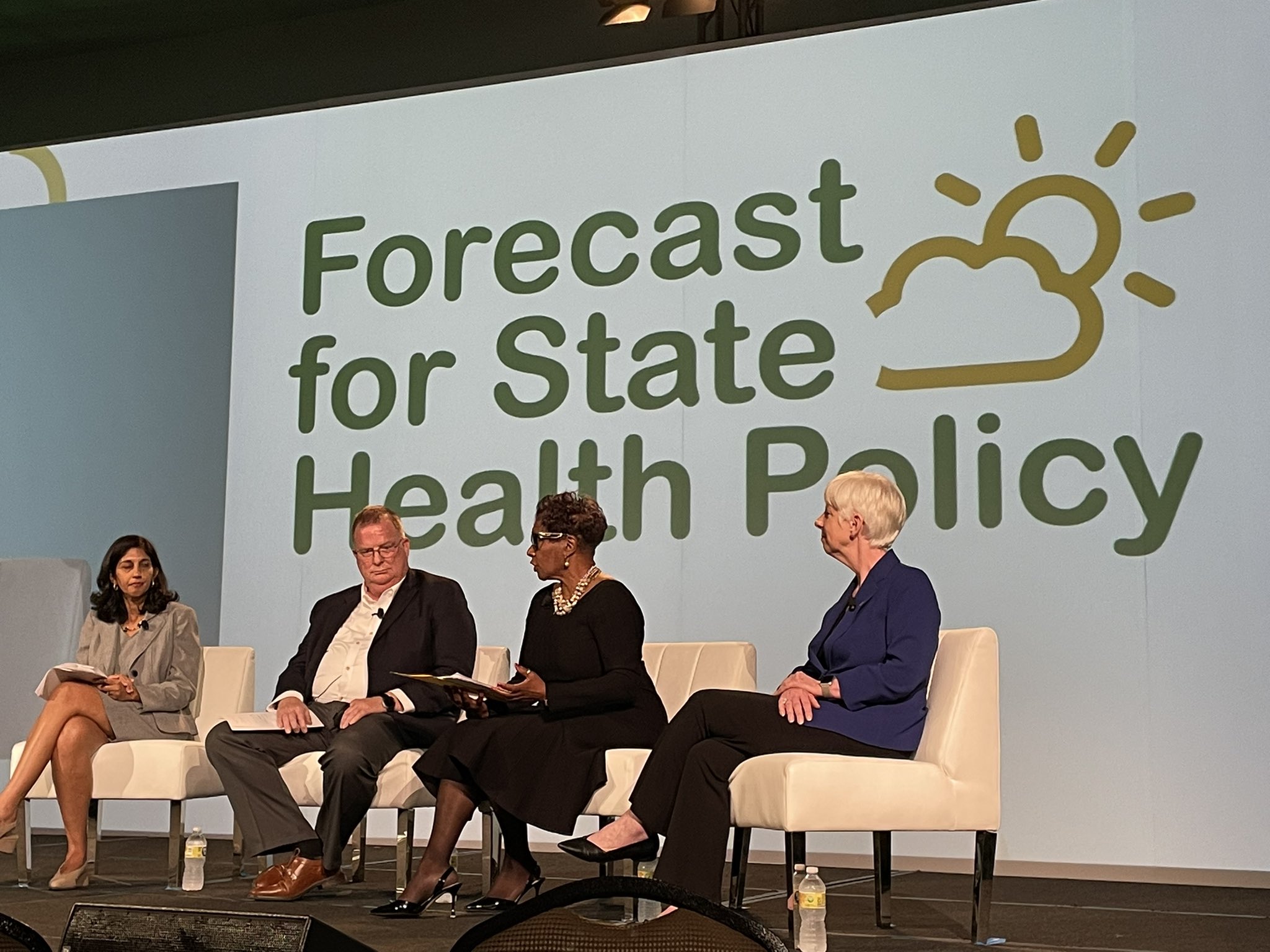NASHP 2022: Recapping the 35th Annual National Academy for State Health Policy Conference

Last week, the RHPC team had the opportunity to sponsor and attend the National Academy of State Health Policy’s 35th Annual Conference. Held in Seattle, Washington, the conference gathered over 750 state leaders and policymakers from across the country to discuss pressing health care challenges and share evidence-backed solutions. Below are three key themes from the conference, highlighting solutions implemented by some states:
Health Care Cost Containment
Several states presented their work to establish cost growth benchmarks. Data collection and analysis are key components of any cost containment strategy. Many states identified underlying drivers of health care costs including provider, hospital and pharmaceutical costs, which contribute to increasing premiums. Inflation, increasing costs, and challenges with staffing and retention are projected to impact cost growth, leading some states to adjust their benchmarks to accommodate for these factors.
Some states, like California, use enforcement mechanisms such as performance improvement plans and financial penalties to ensure compliance.
Advancing Value Based Payments
Oregon established the Value Based Payment Compact in 2021. The VBP Compact is a voluntary commitment by payers and providers to participate in and expand VBPs, meeting specified targets and timelines over the next four years. The Compact currently has 47 signatories, covering 73 percent of the people in Oregon.
Prescription Drug Affordability
Establishing Prescription Drug Affordability Boards (PDAB): Several states are working with NASHP using its model legislation to champion PDABs that can review and promote transparency in prescription drug prices and establish upper payment limits to drugs that are deemed unaffordable.
California is going a step further, spending $100M in state funds to develop drug manufacturing partnerships, starting with the development of three low-cost interchangeable biosimilar insulin products ($50M) and is building a CA-based manufacturing facility ($50M) to produce these biosimilars.
Behavioral Health
Building Rural Crisis Systems
States are leveraging different models to increase access to behavioral health resources and services for rural communities.
Oklahoma’s Comprehensive Crisis Response Continuum enhances services available to individuals experiencing behavioral health crises. This model expands availability of same-day appointments, provides access to private transportation services, equips law enforcement officers with 24/7 access to a licensed behavioral health practitioner, and deploys a Mobile Crisis Team to respond to 988 calls as needed for assessment and intervention.
The All-Texas Access Initiative (SB 454, 2021) is a legislatively mandated initiative focused on increasing access to mental health services in rural Texas communities with the goal of diverting Texans with mental illness away from the criminal justice system and into treatment. The initiative is based on the understanding individuals are less likely to escalate to crisis when they have access to routine mental health services. All Texas Access partners with local mental health providers, faith-based groups, foundations and organizations that support well-being to ensure rural residents would have regular access to mental health care services, resources and supportive communities.
Leveraging community-oriented approaches to reduce incarcerations- Maricopa County in Arizona serves as a nationwide model for behavioral health crisis systems. The system includes a 24/7 crisis hotline, mobile crisis teams, and crisis facilities in 9 locations across the county. The hotline, mobile crisis units, and crisis facilities have electronic systems that can easily share data. Each component of this system works in collaboration with first responders and mental health providers to address an individual’s emergency and ensure that person is diverted to appropriate treatment prior to an arrest taking place.
Many states utilize SAMSA’s Sequential Intercept Model (SIM) to identify gaps in services and resources to fill those gaps. Using this model, many states are focusing on early intervention and leveraging community services to ensure those experiencing mental health crisis are connected to treatment and wrap around services rather than ending up in the criminal justice system.

